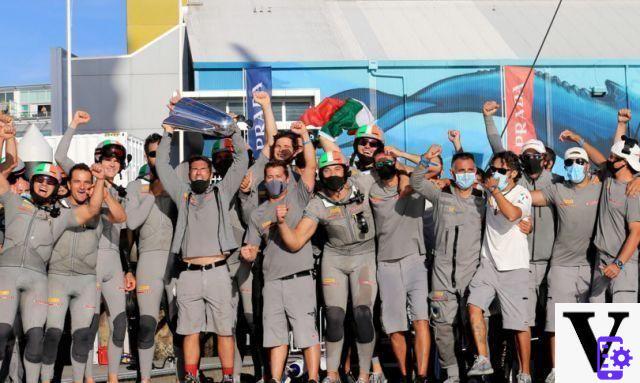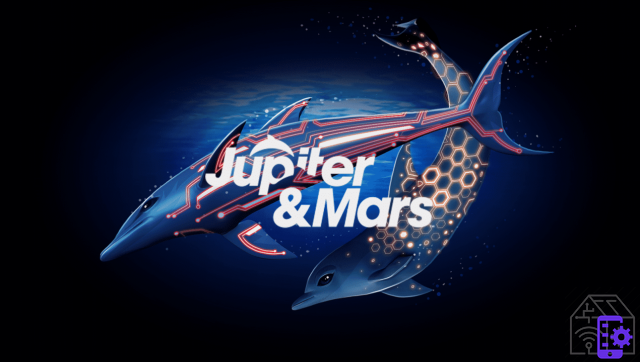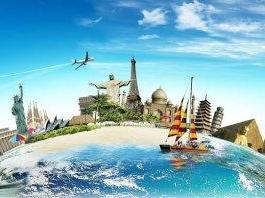Saying Luna Rossa is like saying Alberto Tomba or… No, perhaps another example of equal importance does not come to mind. That is, able to excite all Italians, from the north and south, whether they are experts in the sport or not, with all due respect to the football media phenomenon.
In these days Luna Rossa is engaged in the exciting America's Cup: let's retrace its steps and discover something more than a boat that has now entered the recent national mythology.
Luna Rossa e l’America’s Cup
History and sports news come together in this March 2021, in which the Luna Rossa crew is engaged in the thirty-sixth America's Cup. The scenario of the prestigious trophy this year is the Hauraki Gulf, opposite the New Zealand city of Auckland, where the 2000 and 2003 editions have already been held.
To clash will be Luna Rossa of the Challenger of Luna Rossa Prada Pirelli, winner of the Prada Cup 2021, and Rehutai of the Defender of Emirates Team New Zealand.
 The days of the Red Moon
The days of the Red Moon
- Colivicchi, Fabio (Author)
How the America's Cup works
The regatta will be run by two AC75 class yachts, or monohull sailing boats 75 feet (23 meters) long, which by regulation must be built in the country of origin.
It competes in five regatta courses, chosen from time to time according to the climatic conditions and windiness. It is a challenge to the best of thirteen races: the first team to reach seven wins raises the cup.
Luna Rossa Prada Pirelli won the 2021 Prada Cup by beating the Ines Team UK with a resounding 7-1 and thus becoming the challenger of the defender, the reigning champion of the America's Cup: Emirates Team New Zealand.
The calendar
Now the Italian crew will therefore have to contend with the hosts, in a tight calendar of challenges that started on Wednesday 10 March and will continue until one of the two teams wins seven wins.
Each day of competition includes two regattas, and in the event of a tie, we will reach the last exciting day in which there will be a single decisive challenge. The next stages have already been set until Monday 15 March, in four consecutive days.
The first two match-races took place on Wednesday 10, at 4 am Italian time, and saw the two teams in perfect equality: Race 1 went to the New Zealanders and Race 2 to the Italian team.
Draw 1-1 also on the second day of racing, which took place on Friday 12.
Ma here is the complete calendar:
Wednesday March 10
Race-1: Luna Rossa-Team New Zealand 0-1 (+31 ″)
Race-2: Luna Rossa-Team New Zealand 1-1 (+7 ″)
Friday March 12
Race-3: Luna Rossa-Team New Zealand 2-1 (+37 ″)
Race 4: Luna Rossa-Team New Zealand 2-2 (+ 1'03 ”)
Saturday March 13
Race-5: 04.00 am
Race-6: to follow
Sunday March 14
Race-7: 04.00 am
Race-8: to follow
Monday March 15
Race-11: 04.00 am
Race-12: to follow (possibly, if neither team has won seven races).
The legendary America's Cup
To give a simple confirmation of the prestige of the America's Cup, just think that we are talking not only about the most famous trophy for sailing boats, but also and above all about the oldest sporting trophy that is still competing for today. Since the first challenge, held off the Isle of Wight on 22 August 1851, thirty-five editions of the America's Cup have been held.
The America's Cup of sailing is also called the Cup of the Hundred Guineas, equivalent to the cost of the first silver pitcher that went to the winners of that distant August (the US team, for the record).
Luna Rossa: history and myth, victories and defeats
The story of Luna Rossa begins in February 1997, with its foundation by the entrepreneur Patrizio Bertelli.
Eager to compete in the America's Cup with an Italian team, Bertelli symbolically launches his challenge in the Milanese studio of the naval architect German Frérs. From there it was a short step to hire the skipper Francesco De Angelis, the Brazilian sailor Torben Grael and the designer Doug Peterson. And just as fast were the design and construction of the first IT 45 hull, launched in 1999. Training to participate in the America's Cup would begin in July of the same year.
And here we are in March 2000, when all Italians were able to get excited in front of the television. First rejoicing for the victory at the Luis Vuitton Cup (the current Prada Cup) and then despairing for the defeat in the America's Cup, won by the New Zealand team.

The choice of name
The Italian boat was the first to enter the America's Cup after the Moor of Venice, which had participated in the 1992 edition.
The name, wants an anecdote of which no one has ever verified the veracity, came to mind of Patrizio Bertelli. One summer evening he was observing the full moon in Punta Ala, a fraction of the Grosseto municipality of Castiglione della Pescaia. It was necessary to decide the name for the boat, Bertelli and his wife wrote some on a piece of paper, and the full moon that inspired the entrepreneur turned out to be the best choice. And it was also the best name to challenge the New Zealand hull, which was called Black Magic.
The materials
Luna Rossa's materials and technology have always been at the forefront.
In anticipation of the very important challenge currently underway, the Prada Pirelli Team designed a masterpiece that required 7000 square meters of carbon fiber and 400 square meters of aluminum. The sail, made with a thread of over 20.000 kilometers (you read that right) of carbon fiber, behaves like a traditional sail.
The AC75 is 22,7 meters long and 26,5 meters high. It weighs 6,5 tons and can reach 50 knots at so-called load-bearing speeds.
It was created with two scientific partners, the companies Wärtsilä and Teorema, who applied data analytics and machine learning processes to the construction of the boat.
The crew consists of 11 men, for a maximum weight of 960-990 kilos, and counts on two helmsmen, Francesco Bruni and the Australian James Spithill. The two will share the tasks: the first will take care of controlling the rudder and the second of managing the foils, special appendages that allow the AC75 to fly over the water.
For the rest ... all glued to the TV screens!


























